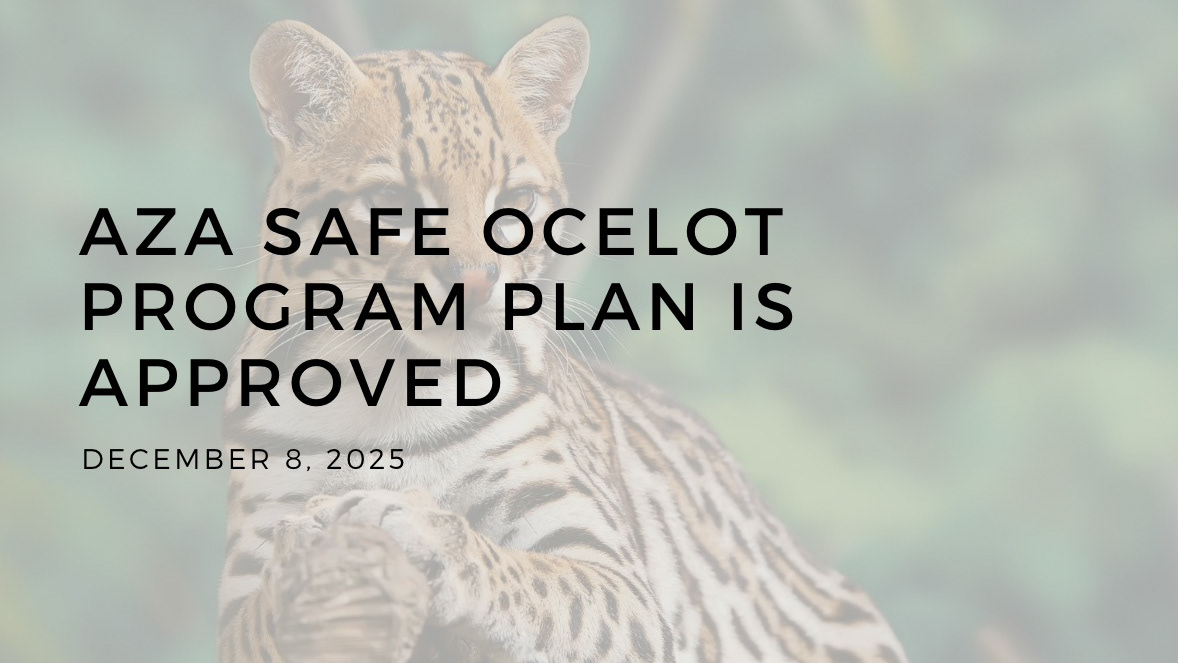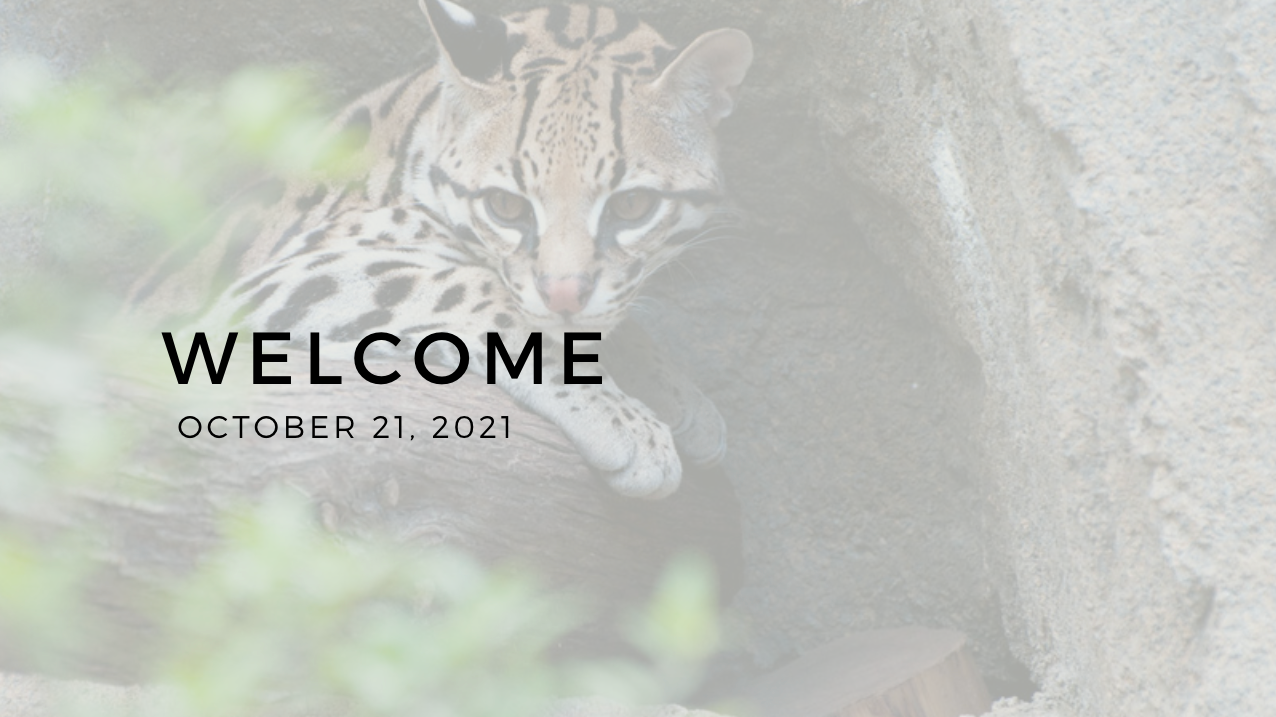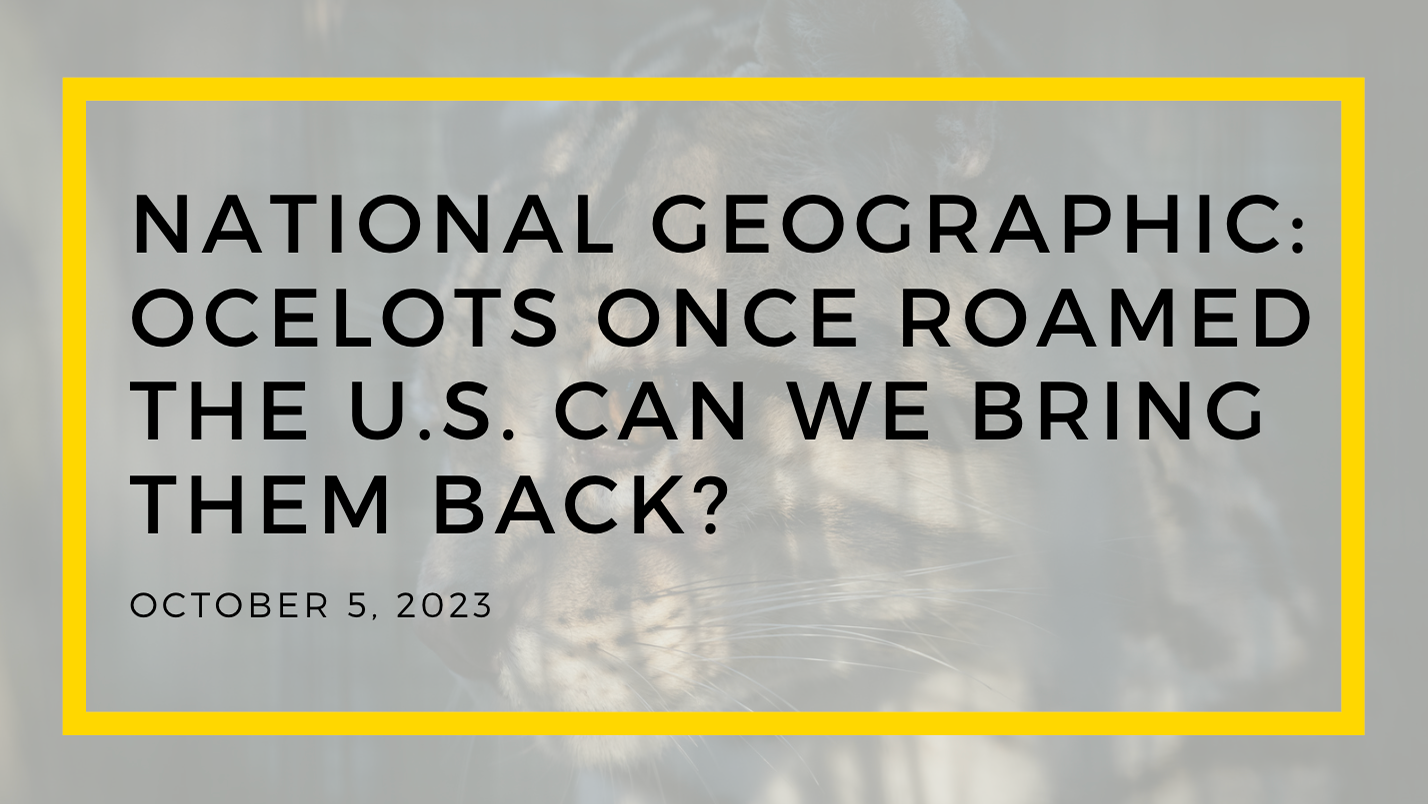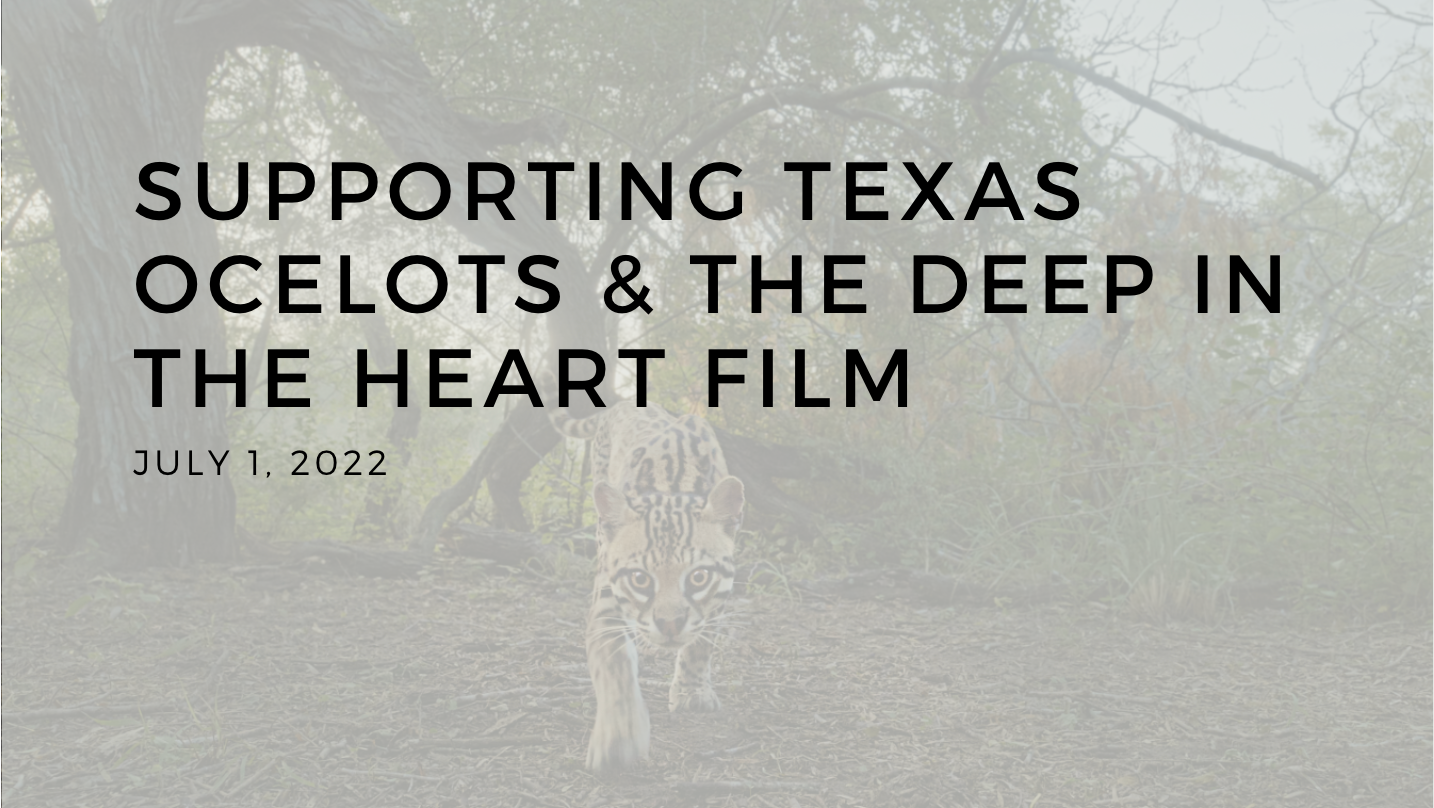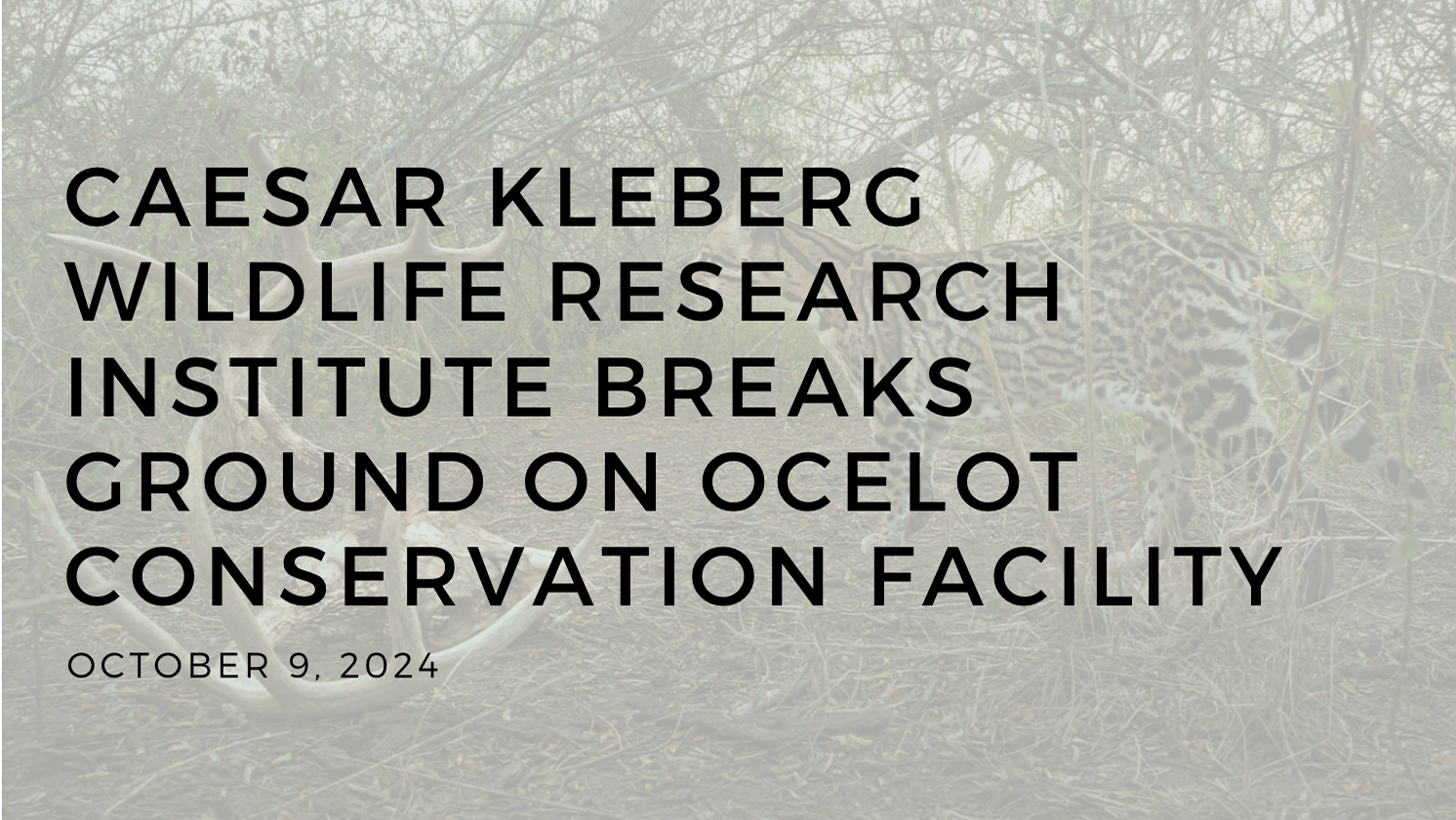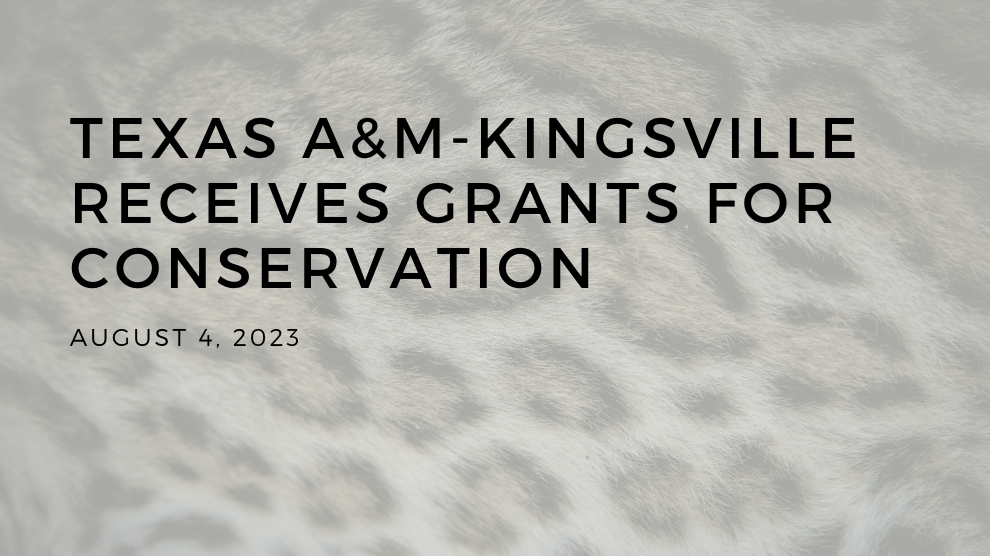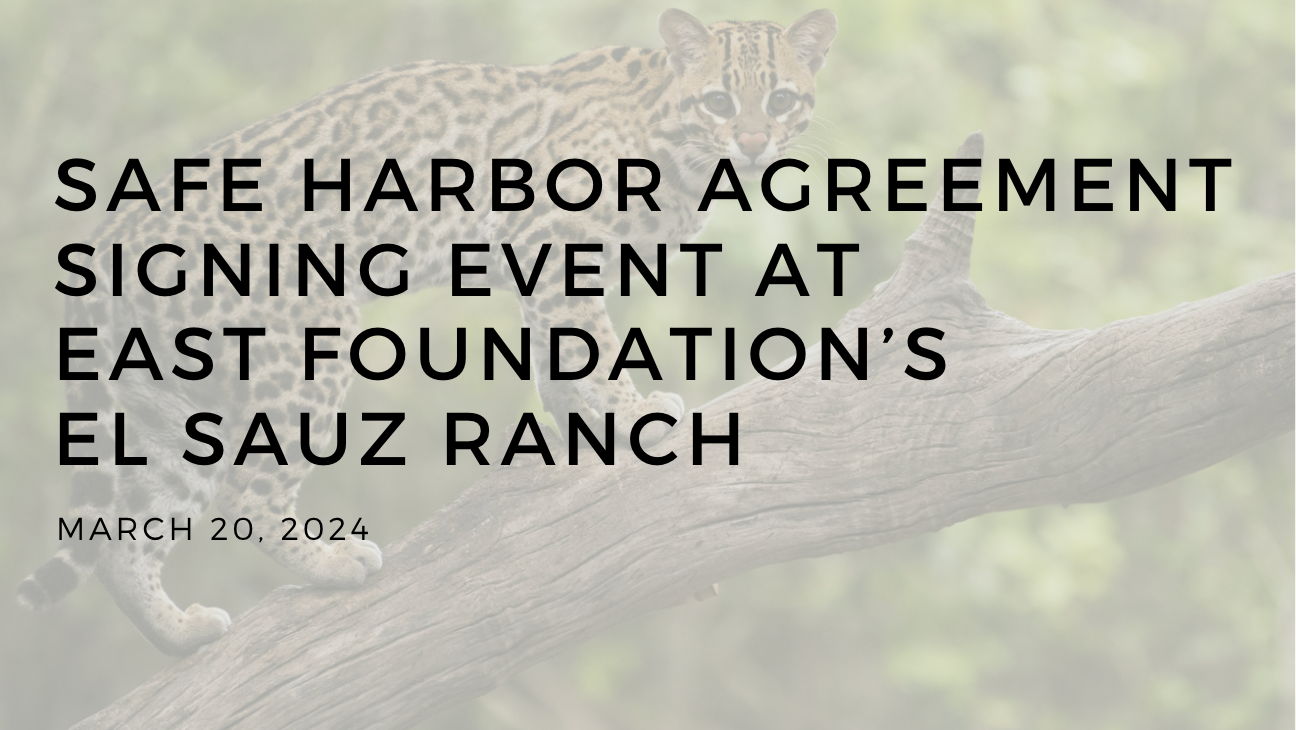Zoo collaboration essential for success of Texas-based breeding, rewilding and reintroduction program
CINCINNATI, OH—November 15, 2023 – An ambitious recovery program for wild ocelots in Texas is being implemented with the assistance of the Cincinnati Zoo & Botanical Garden and several other zoos accredited by the Association of Zoos and Aquariums (AZA). Texas ocelots are highly endangered with just 60 to 80 wild cats surviving in fragmented habitats near the southern Mexican border. To assist with species recovery, the Cincinnati Zoo and three zoo partners (Oklahoma City Zoo and Botanical Gardens, San Antonio Zoo, and Audubon Zoo) have established a Saving Animals From Extinction (SAFE) program for ocelots under AZA guidance.
“SAFE Ocelot will provide a potential lifeline to Texas ocelots by broadening their genetic diversity, increasing their numbers and supporting their recovery in the wild,” said Dan Ashe, AZA’s President and Chief Executive Officer. “For other endangered native species like black-footed ferrets, California condors and Mexican wolves, animals managed under human care have been vital for population recovery and the same may hold true for America’s last wild ocelots”.
For the recovery program, SAFE Ocelot is working in partnership with multiple stakeholders, including the East Foundation, Texas A&M University, Duquesne University, United States Fish and Wildlife Service (USFWS) and Texas Parks and Wildlife Department.
As one component, a dedicated breeding and rewilding facility for ocelots will begin construction soon in South Texas, with funding provided by private donors. Once the facility is completed, SAFE Ocelot will coordinate the transfer of ocelots from zoos and provide husbandry and reproductive management guidance to optimize their breeding with native Texas ocelots.
The AZA’s Ocelot Species Survival Plan (SSP), coordinated by the Cincinnati Zoo’s Laura Carpenter, currently manages 64 (non-Texas) ocelots in 40 zoos that will comprise part of the source breeding population. Their offspring, after habituation to predatory living in the rewilding facility, eventually will be released onto a vast East Foundation ranch property that lies within the historic, but currently unpopulated, natural range of Texas ocelots.
“The knowledge and expertise of zoo curators, keepers, veterinarians and scientists are essential for the successful propagation of ocelots under human care for this recovery program,” said the Cincinnati Zoo’s Dr. Bill Swanson, the SAFE Ocelot Program Leader. “Zoos have been breeding and managing ocelots for over 20 years within the Ocelot SSP and that experience has created the framework to apply similar approaches to support Texas ocelot recovery”.
Two other key steps taken over the past few months will help to ensure the success of this recovery program. First, the East Foundation has submitted a Safe Harbor Agreement (SHA) proposal to the USFWS for their review. If approved, the SHA will allow ocelots to be released onto East Foundation lands without federal restrictions on cattle ranching or other agricultural practices, prioritizing ocelot conservation while continuing with traditional ranch activities. Second, Texas A&M University-Kingsville recently was awarded a multi-year, $12.2 million contract by USFWS for ocelot recovery efforts with some of the funding directed to the Cincinnati Zoo, East Foundation and Texas A&M University Natural Resources Institute. The zoo-dedicated funds will support improvements to ocelot breeding facilities within zoos, genetic assessment of the source population and application of assisted reproductive sciences to ocelot propagation.
More information about the Texas ocelot recovery program is available at https://recovertexasocelots.org.

